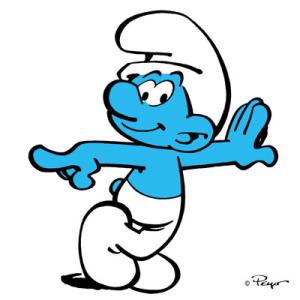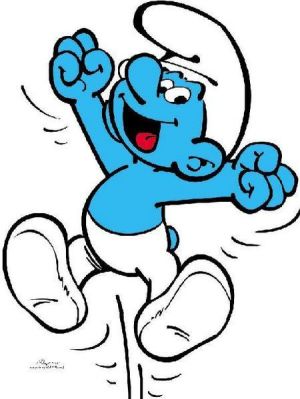Comics /
European Comics
Why the Smurfs Matter
By Hervé St-Louis
November 13, 2012 - 07:37
The Smurfs have had a dimmed revival in 2010 and 2011 in the English world due to the
blockbuster summer movie released about them, the first non animated movie they ever had. At the same time, NBM Publishing’s Papercutz division obtained the rights to Belgian cartoonist Peyo (Pierre Culliford) for the North American English-speaking market. The Smurfs, called the Schtroumpfs in French first appeared in Johan and Peewit in 1958 in a story about a magic flute. Their popularity would soon surpass their human friends and fellow Peyo creation.
The second animated appearance of the Smurfs was in Johan and Peewit’s adaptation of
The Smurfs and the Magic Flute which was animated by Belgian animation studio Belvision. The animation was much better than the Hanna-Barbera American cartoon series which quickly ran out of original material from Peyo’s stories and had to start creating original stories for a series that was quite popular with kids in the 1980s. Though the themes reflected in the comic books remained, the Smurfs were still small imps the size of three apples who live in a hidden village deep in a forest and numbered about 100, they were soon supplemented by new made for television characters and adapted ones such as the kid Smurfs, Baby Smurf and a set of grandparent Smurfs.
The Smurfs belong to the
Charleroi Belgian School of comic book illustration and storytelling. Their design was ripe for animation. Their figures and proportions were soft and round and easily adaptable for an animation studio. The action of the Smurfs in comics focused on physical gags with action lines following them. Whether a reader reads their story in French, Dutch or English, it is very easy to understand what’s happening without reading the text captions. Charleroi comic books like the Smurfs tend to abstract reality in favour of cartoon figures. Even backgrounds are simplified compared to the elaborate settings found in Ligne Claire comic book series like
Tintin or
Blake and Mortimer. The contour drawing lines are thick and sharp.
The Smurfs have been tagged with many political themes. Every few years, some writer writes a tract about how the Smurfs are really communists living in a commune with Papa Smurfs being their “red” leader. Because every Smurf has one job in the village and that money is not used, the communist pop talk has continued. Other writers focus on the gender imbalance in the Smurfs. There are about only three female Smurfs, two of them created by Hanna-Barbera. The Smurfs were featured in an approved Belgian UNICEF public advertising in Belgium about the consequences of child soldiers in Burundi. In the 30 seconds clip released in 2005, the Smurfs’ village is bombed and they all die, except for Baby Smurf.
The Smurfs are one of the most popular European comic book worldwide, thanks their animated series and German-made popular action figures, collected throughout the world. Though their language is mainly composed of the word “smurf,” they have broken several cultural and linguistic barriers, the first one being the dualistic language of Belgian culture.
Last Updated: January 17, 2025 - 08:20

